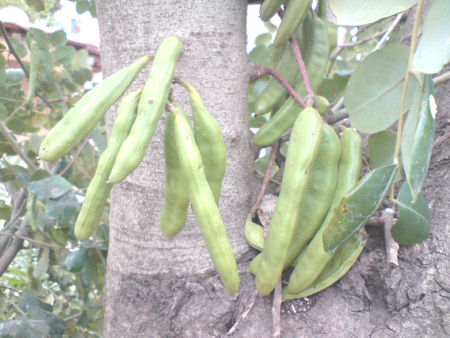
Objective:
The carob tree cultivation is handicapped by the poor quality of the seedlings leaving the nursery due to the deterioration of the root system, and poor root quality is indeed a factor of failure when placing plants in the field. The objective of this work is to study the effect of root excision to address the problem of the pivotal nature of the root system and mycorrhization to improve the physiological quality of plants at the nursery stage and increase their chance of success in planting.
Context:
The taproot of the carob tree, clearly visible at the seedling stage, is a large part of the root that pierces the nursery container and sinks into the soil. When uprooted, a major part of the root system is cut off and remains in the soil, which seriously affects the survival of the plants during transplanting. We test for the first time the effect of 2 cultural treatments on the performance of carob plants. These treatments consist of root excision of pre-germinated seeds and mycorrhization of seedlings.
Contacts:
Faten Kanfoud, fatenkanfoud85@gmail.com, http://www.inrgref.agrinet.tn/
Abdelaziz Ayari, abdelazizayari@yahoo.fr, http://www.inrgref.agrinet.tn/
Naoufel Souayah, souayahnaoufel@yahoo.fr, http://www.inrgref.agrinet.tn/
Mohamed Larbi Khouja, khouja.larbi15@gmail.com, http://www.inrgref.agrinet.tn/
Further information:
Afif M., Ben Fadhel N., Khouja M.L. et Boussaïd M., 2006 – Genetic diversity in Tunisian Ceratonia siliqua L. (Caesalpinioideae) natural populations. Genetic resources and crop evolution 00, 1-11.